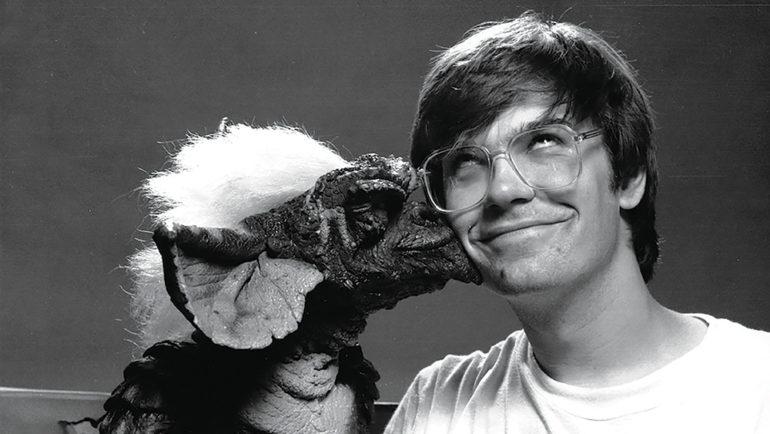Hollywood Execs Seek Licensing Deals at the New York Toy Fair
By Nicole Russin-McFarland
LOS ANGELES (Variety.com) – On Feb. 16 more than 30,000 studio executives, buyers and toy company reps will gather in Manhattan for the annual Toy Fair New York, all vying for market share and trying to snag the latest hot trend in a fast-changing industry.
Those working the film side of the business will focus much of their attention on action figures — including monsters, heroes and villains — as they negotiate deals around a seemingly infinite assortment of characters, who, unlike movie stars, never demand pay increases.
Nonetheless, despite a lack of pressure for higher wages from the stars, the toy business can be a tough one as thousands of individuals and companies compete for their slice of a growing, albeit finite, pie.
According to trade org the Toy Assn., American toy sales grossed $27 billion in 2017, driven in large part by properties from the Marvel Universe and the “Jurassic Park” franchise. Action figures and their accessories accounted for a 10% sales growth in the market.
The popularity of “Jurassic World” with children and adult collectors one generation after “Jurassic Park” doesn’t shock Joe Dante, who directed Amblin Entertainment’s 1984 monster comedy “Gremlins,” one of the company’s early productions. He credits producer and Amblin co-founder Steven Spielberg for sticking to his guns as an early pioneer of toy marketing tie-ins.
“In the original script, after the first 20 minutes, [main character] Gizmo disappeared from the movie. He became the bad gremlin, Stripe,” Dante says. “Steven decided at the last minute he liked Gizmo. [That’s what] sold the movie. [The studio] wanted to cut out a lot of stuff because they thought it was revolting. Steven said, ‘We can cut out the gremlins and call the picture “People,” but I don’t think anyone is going to come.’”
Critical to the success of toy characters is authenticity. “A big part of the process is having the team that created the effect or specialty costume for the film that the product ties into do the work of creating the masters for production,” says Academy Award-nominated special-effects artist John Rosengrant, a founder of creature design shop Legacy Effects. “That way the collector has a piece that has authentic ties to the movie characters.”
Randy Falk, director of product development at the National Entertainment Collectibles Assn., produced toys for both “Gremlins” and films of director Guillermo del Toro. Of the latter, he says, “We packaged [the characters bilingually]. People in the Latin community look to [del Toro] as a hero. Some of them had never bought an action figure before.”
“Some of these ‘statues’ might have taken literally years of work before they are ever announced to the public,” says Sideshow Collectibles CEO Greg Anzalone, who has overseen franchise toys from “Star Wars,” “Wonder Woman” and “Harry Potter,” and also collaborates with Legacy’s team. “This is genuinely art, and Sideshow collectors also connect with our products in that way. [They are] absolutely art collectors.”
In a latter-day twist, such films as “Black Panther” have put the spotlight on the need for diverse toys, says Kim Bass, executive creative consultant on the animated WB Kids show “Men in Black: The Series,” which aired from 1997 to 2001.
Jen Caveza, senior VP of toys and business development at Nickelodeon, says the network’s multiethnic characters including Dora the Explorer, Nella the Princess Knight and AJ from “Blaze and the Monster Machines” are a reflection of modern children.
And now, with cable competing with streaming, has shifted to digital marketing. “We recently worked with celebrities like Laila Ali, Chris Paul and Mario Lopez, and we also partner with mid-tier influencers, those who have followings in the 10,000 to 100,000 range,”Caveza says. “We advertise on YouTube and streaming audio players.”
If you’re looking for a recent success story, look no farther than “Rise of the Teenage Mutant Ninja Turtles.” “We executed the most aggressive digital and sneak peek pre-release strategy in Nickelodeon history for the first episode, which launched globally on YouTube in four languages before the linear premiere,” Caveza says.
Another factor in the licensing of toys is the enormous disruption taking place in the retail sector. John Leonhardt, head of consumer products at licensing company and anime streamer Crunchyroll, says the firm uses “our owned events like Crunchyroll Expo, and direct-to-consumer in our Crunchyroll store.”
Times continue to change. “There was a stigma 20 years ago that toys were for boys, not for men, and certainly not for females, and that if you were still collecting them, you were a loser that didn’t have a job,” Falk says. He estimates women are half of his clientele visiting his Target sections at more than 1,800 store locations.
Dante has a word to the wise: hang onto those toys. “If I had the comic books my mother made me throw out,” he laughs, “I wouldn’t be in the movie business.”
(Pictured above: Joe Dante directed “Gremlins,” a pioneer of toy marketing tie-ins.)

